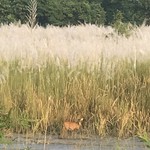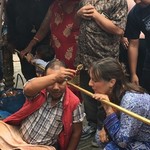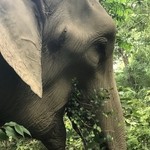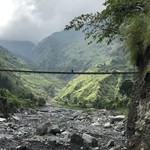Highlights
- Witness the Tibetan Buddhist culture and architecture of Lower Mustang
- Hike through some of Nepal's most spectacular scenery
- Enjoy comfortable home bases in Jomsom and Kagbeni while exploring the area
- Go hunting for fossilized sea creatures, 3000 meters high in the mountains
- Experience this ancient kingdom without the pricey permit of Upper Mustang
Overview

The Lower Mustang region of Nepal sits on both the classic Annapurna Circuit and is on the way to mysterious Upper Mustang, but it deserves more attention as a destination in its own right. Spending four days to a week here will allow you to undertake some beautiful day hikes, witness the incredible dry landscape in the rain shadow of the Himalayas, and experience the Tibetan Buddhist culture of the local Gurung people.
Jomsom is the gateway to Lower Mustang and is a one-street town with lots of lodges, ranging from very cheap to very comfortable. (You can even enjoy Himalayan Java coffee here!) Kagbeni, an hour's drive or three-four hour hike away, is more atmospheric. The medieval town has a crumbling palace, old monastery, mud-walled traditional homes and narrow lanes with prayer wheels. Spending a couple of nights in Jomsom and then a few more in Kagbeni is the ideal way to divide your time.
The winds in Mustang are very strong, and pick up by about 11 am each day. In the cooler seasons, they can also be bitterly cold. It is best to plan your days accordingly, to avoid the afternoon winds, and set out as early as possible.
Another great way to experience the Lower Mustang region is on a mountain bike.
Marpha

A good half-day excursion from Jomsom is to visit Marpha village (8,759 ft / 2,670 m). Walk south out of Jomsom, along the main road (which isn't busy) and keep going, for 90 minutes. The path to Marpha is quite obvious, along a vehicle road and beside the Kali Gandaki river. Marpha is a clean, pretty town watered by paved canals and surrounded by green irrigated orchards.
A return hike to Marpha from Jomsom takes three hours, not including time to stop in Marpha for a slice of apple pie (definitely recommended), or the town's famous cider and brandy. From Marpha there are signs pointing the way up to Dhaulagiri Base Camp. There are also several lodges in Marpha, so this is an alternative place to Jomsom to spend your first night in Lower Mustang.
Chat with a local specialist who can help organize your trip.
Muktinath

From Kagbeni, Muktinath (12,303 ft / 3,750 m) is a five-hour round-trip hike. Muktinath Temple is a pilgrimage site for Hindus and Buddhists and is especially popular with Indian tourists. There is a bumpy vehicle road, but it's best to follow the smaller tracks uphills if hiking all the way to Muktinath. On the way, you'll pass through the ancient town of Jharkot (3,550 m./ 11,646 ft.), from which Muktinath is another hour's walk. If the weather is clear, you should be able to see the Dhaulagiri and Nilgiri Ranges from Muktinath. The temple is the focal point and is actually further uphill from the town of Ranipauwa. It is a small pagoda-like structure where holy fire and holy water can be found.
Tiri
The walk to Tiri (9,186 ft / 2,800 m) from Kagbeni takes 30 to 45 minutes. To get to Tiri, cross the bridge in Kagbeni and follow the only path north, towards the green terraced farmland in the distance. This is a very rough road, and you'll probably only have to share it with the odd motorbike. From the small village of Tiri, take the steep path up to a monastery with great views of the Kali Gandaki, the bare rocky hills, the snow-capped Himalayan peaks and Upper Mustang in the distance. Along the way, notice the color scheme of the Buddhist chortens in Mustang--white, red and blue-gray. These colors are distinctive of the area.
Lubra
Lubra (9,750 ft / 2,972 m) is a Bon village and is said to be the last remaining place in Mustang where the pre-Buddhist religion is followed. On top of the hill above the town sits what is thought to be the last remaining Bon monastery in Nepal. Around 20 families live in Lubra, so it is a small town, and can only be accessed by hiking. You can see the unique traditions dotted around town, such as the colorful string 'devil traps' that people put in their doorways to catch the devil at night. It's possible to spend the night in Lubra, or else pass through on the way between Kagbeni and Jomsom.
Meditation Caves & Fossil Hunting

From Kagbeni heading east is a small valley that opens up with the most incredible sandstone rock formations that look like overgrown anthills. After about 90 minutes of walking, mostly following the small river, you will reach the site of an abandoned village. In the cliffs around the village, meditation caves have been carved. It's not exactly known why the village was abandoned, or who used the caves, but it is believed that the caves were used by regular villagers and that the village was abandoned due to some natural disaster. From this spot you can see Jharkot in the distance, on a high ridge, as well as the Thorung La, which trekkers on the Annapurna Circuit must cross.
While hiking in this valley, be sure to look for stone ammonite fossils. These are abundant throughout the Kali Gandaki gorge and are ancient reminders of a time before the Himalayas existed. The Hindu epic, the Mahabharat, even mentioned Muktinath as the source of these fossils, which it called shaligrams, a symbol of Vishnu.
Getting there and away
From Pokhara, flying is by far the quickest and most comfortable way of getting to Lower Mustang. Flights leave early to avoid the strong winds that whip through Mustang by late morning. Although the flight is a short twenty minutes, they are memorable minutes as you soar through the Kali Gandaki Gorge, with Dhaulagiri and Tukuche to the west, and Nilgiri Central and Annapurna to the east.
Taking a public bus or private vehicle between Pokhara and Jomsom is the ‘adventurous’ option, but can take more than ten hours along uncomfortable roads.
It's also possible to trek the whole way there, avoiding the road by following mountain trails. Lower Mustang sits on the classic Annapurna Circuit Trek, so it would be possible to add these day trips on to that much longer trip.
Best Season
As Mustang is in the rain shadow of the Himalayas, it experiences different weather to much of the rest of Nepal. While May-September are wet in most of the country, these months are a good time to visit Mustang. Be aware though that flights from Pokhara have a higher likelihood of being canceled during the monsoon, because of bad weather on the south side of the Himalayas. At this time, the roads can also be quite treacherous, as the rain makes them muddy and slippery, and can trigger landslides. Alternatively, spring (March-May) and autumn (September-November) are good times to visit.
The altitude of Mustang is high so the temperatures are cooler. This means it can get unpleasantly cold in the winter months, especially once the inevitable winds pick up, so prepare accordingly if traveling there between November and March.
Permits
While you need a pricey permit to enter Upper Mustang ($500 for 10 days), this isn't necessary if you're staying in Lower Mustang. For the area around Jomsom, Kagbeni and Muktinath you only need a cheaper permit (Rs 2000, or approx $20 USD). These are best bought in Kathmandu or Pokhara as they are cheaper than purchasing them on arrival, when you'll have to pay double.






